Sure, Pay-for-Performance…But What Performance?
Addressing the Top Concern of Compensation Committees
By: Ronald Bottano and Russell Miller
Executive pay plans are keeping corporate directors awake at night. The top concern of compensation committees is “aligning pay more closely with performance,” according to Korn/Ferry International’s 33rd Annual Board of Directors Study. Yet the ease with which “pay-for-performance” rolls off the tongue these days masks the complexity and risks boards confront when attempting to align pay with performance.
Important and difficult questions loom behind the buzzword phrase:
• Does our compensation plan support the achievement of our performance objectives?
• Which performance measures align with our definition of success?
• Do those measures drive the right management decisions?
In addition to these daunting questions, boards must contend with recent revisions to U.S. Securities and Exchange Commission (SEC) reporting guidelines. The rules require companies to provide much more detail about their executive compensation programs. In particular, publicly-held companies must now provide a clear explanation of performance-based compensation plans and their process for setting goals.
As a result, compensation committees, now more than ever, need to apply greater rigor to the process of designing and communicating their executive compensation programs. In short, a larger dose of structure and science should inform pay-for-performance systems within executive compensation programs.
This paper’s purpose is to help compensation plan designers:
1) Understand performance measures and how they evolve;
2) Evaluate different types of performance measures; and
3) Select optimal measures by evaluating internal and external factors that influence performance.
Designing a program that rewards the right pay for the right performance represents one of the compensation committee’s most challenging activities. Yet, when it comes time to translate a buzzword into an effective process, compensation plan designers must ensure that pay-for performance systems measure and drive value-creating decisions.
Understanding Performance Measures – And How They Change
Companies ultimately define performance as the creation of value. Publicly held companies often define long-term value in terms of stock price appreciation and dividends (i.e., total shareholder return or TSR.) Private companies may define
long-term value in terms of increases in intrinsic value (i.e., investing where returns on capital are greater than the cost of capital.)
An effective performance measure evaluates the degree of success a company achieves in creating long-term value. Ideally, success on a performance measure will translate directly to successful long-term value creation. While the objective of performance measures – to measure value-creating decisions – is straightforward, the selection of effective performance measures is complex.
Why? Because the decisions and actions that create value for a company differ based on qualities and forces that fluctuate over time, including:
1) The company’s lifecycle stage;
2) The competitive forces a company faces;
3) The strategic initiatives a company is undertaking
To effectively identify decisions and actions that drive value creation requires an understanding of each of these factors. For example, consider the challenge that an established manufacturing company recently confronted. The company had long focused on maintaining margins and profitability, but recognized that some traditional product lines were becoming commoditized. Pricing power and profit margins were declining as a result. In response, the company launched a
new product line in the hopes of stimulating value creation.
Although the company’s long-term performance objective (to create shareholder value) remained the same, the actions necessary to achieve that objective changed significantly. Rather than focusing exclusively on profitability, the company’s executives also needed to focus on the short-term goal of revenue growth in the new product line. The manufacturer’s strategic objectives shifted due to its lifecycle stage and changing market conditions. As a result, the compensation program, and performance measures within the program, needed to evolve to keep pace with the company’s dynamic business environment.
A Case For Multiple Measures
To ensure that its executive compensation program was aligned with long-term value creation, a communications company transitioning from a regulated, monopolistic environment to a high-growth, competitive environment used a mix of performance measures.
Operational Measures: The annual bonus plan contained a customer satisfaction performance measure. Doing so conveyed the need for executives to transform the company from the lone service provider in its market to a more customer-centric organization competing against several other providers.
Financial: The annual bonus plan also contained revenue and earnings performance measures to emphasize growth and ensure a link to profitability. The revenue measure focused executives on growth while the earnings measure helped ensure that the revenue growth did not sacrifice profitability.
Shareholder Value: A relative TSR measure in the long-term incentive plan ensured that senior executives focused on out-performing competitors over the long term. Absolute value creation over the longer term was recognized through the use of stock options to reward absolute share price appreciation.
Compensation plan designers might have fewer concerns if their companies remained static. Yet companies continually evolve, progressing from a start-up stage (pre-revenue), to a growth stage (focusing on revenue generation), to an established stage (focusing on profitability) and, finally, to a mature stage (focusing on generating returns.)
This lifecycle development rarely proceeds in a linear fashion with clearly defined transitions into new stages. Rather, a company’s lifecycle stage
– and the value-creating actions within each stage
– represents a continuous evolution that may differ among different product lines or divisions. Additionally, markets and competitors also change, forcing organizations to rethink their strategies and, oftentimes, to invest in new strategic initiatives.
When this occurs, different actions and decisions drive successful performance – and, therefore, the measures that track those decisions and actions should change.
Evaluating Types of Measures and Selection Criteria
Equipped with an understanding of the objectives of performance measures, compensation plan designers can evaluate three different types of performance measures as part of a methodical selection process:
1) Operational: Operational measures drive growth and profitability but may not immediately impact financial performance. Market share, same-store sales, innovation, time-to-market and customer satisfaction represent examples of operational performance measures. Also, operational measures could be more milestone-based. For example, a pharmaceutical company might create a strategic measure based on the timing of the drug approval process or the value of its pipeline.
2) Financial: Based on a company’s financial statements, these types of growth, profitability, and return measures link directly to financial performance.
3) Shareholder Value: Shareholder value measures, such as stock price appreciation and total shareholder return, are based on stock performance.
Understanding the different types of performance an individual measure helps drive is important due to the complexity of a company’s approach to creating value at any point in time. A performance measure
– or, in most cases, a blend of performance measures
– should link to multiple and, at times, conflicting, objectives.
Additionally, a balanced performance measurement system will help guide executives’ decision-making. Each type of performance measure offers advantages and disadvantages as the table below indicates:
Operational Objectives
Examples:
– New market penetration
– Acquisition integration
– Customer satisfaction
Pros:
– Clear message of operational objectives
– Line of sight with management’s actions
Cons:
– No bottom line measures
– May not translate immediately to financial results
Financial Objectives:
Examples:
– Revenue growth
– Earnings growth
– Return on invested capital
Pros:
– Results-oriented
– Line of sight with management’s actions
Cons:
– May not translate immediately to shareholder value
Shareholder Value Objectives
Examples:
– Stock price
– Total shareholder return (TSR)
Pros:
– Ultimate objective
– Clearest alignment between management and shareholders
– Flexibility for management to determine the best way to achieve results
Cons:
– Unclear line of sight to management’s actions
– Limited control over the outcome in the short-term
– Influenced by external factors
Given this complexity, it is important to evaluate the following criteria at the onset of the performance-measurement selection process:
• Does the measure motivate decisions that drive long-term sustainable value creation? Put another way: Will success on the measure translate to long-term success for the business and for shareholders?
• Does the measure clearly focus executives on value-creating actions and assist executives in their decision-making?
• Do executives understand how to influence the measure?
• Can the measure be easily understood, tracked and communicated?
An effective performance measure may satisfy some, but not all, of these criteria. For example, a TSR measure may be easily understood and measure long-term value creation but fall short in terms of assisting executives in short-term decision-making (because financial results may not have an immediate impact on stock price.) Alternatively, revenue growth is easily understood but may not link to long-term value creation, especially if it requires significant investment.
For this reason, effective executive compensation programs frequently contain several pay-for-performance measures (see “A Case for Multiple Measures”).
Selecting Measures Based on Internal and External Factors
In addition to the criteria discussed above, there are other internal and external factors to consider when selecting a performance measure. Both sets of evaluations can be strengthened by introducing more rigor, in the form of market and industry analyses, to the process.
Internal Factors
The selection of the right performance measure depends on several internal factors, including the economics of the business. For example, is the company in a service-based business that requires little capital investment or a capital-intensive business whose long-term value requires large investments? A return on capital performance measure may not be appropriate for a service-based business, although it may be perfectly aligned with the needs of a capital-intensive business. The table below outlines how the performance measures for a service-based business (e.g., advertising firm) may differ from a capital-intensive business (e.g., semiconductor manufacturer.)
Context:
• Low capital intensity
• Highly scalable/low barriers to entry
• Competitive industry
Example
• Advertising firm
Operational Objectives
• Operational: Market share, customer service
• Financial: Revenue growth, EPS growth
• Shareholder Value: Absolute total shareholder return (TSR)
Context
• High capital intensity
• Low scalability/ high barriers to entry
• Strong product cycles
Example
• Semiconductor manufacturer
Operational Objectives:
• Operational: Inventory turnover
• Financial: Return on capital
• Shareholder Value: Relative TSR against a peer set of Companies
A company’s strategy and lifecycle should also be considered when selecting performance measures. Is the company focused on top-line revenue growth or is it in more of a maintenance mode? The answer to these and related questions help inform whether revenue growth or earnings are appropriate metrics.
For example, when a communications company in transition was generating returns at the higher end of its peer group and well above its cost of capital, it reevaluated the performance measures in its executive compensation program (see “A Case for Multiple Measures.”)
Revenue Growth & Return on Capital vs. TSR S&P 500
Based on the company’s lifecycle stage and its strategic imperative for growth, the analysis indicated that the company could increase shareholder value by focusing less on generating a high return on capital and more on driving revenue
growth. That finding ultimately influenced the blend of performance measures selected for the executive compensation program.
Understanding the economics of a business and its business strategy are critical to selecting an appropriate performance measure. A well-designed pay-for-performance program balances competing factors, such as growth vs. return on
investment, and focuses executives on activities that create sustainable value over the long-term.
External Factors
Executive compensation plan designers also should tap external information to determine which performance measures historically align with value creation among similar companies and, ultimately, to gauge the value of potential performance measures. This type of evaluation can be performed through statistical data analysis such as regressing past financial performance with increases in shareholder value to determine which performance measures provide the strongest correlation to value.
For example, a retail company was looking at potential performance measures for its incentive plan. An analysis of the relationship between performance measures and value creation among other retail companies demonstrates the importance of profitable growth.
As the two charts on the following page illustrate, there is some degree of correlation between same-store sales growth and shareholder value. However,
the correlation to value is not as strong as the correlation between operating profit growth and shareholder value. This demonstrates that while same-store sales growth may be an important strategic measure, it is important for a company to also focus on profit growth in order to create shareholder value.
Conclusion: Ensuring Alignment and Alleviating Concerns
The evaluations and analyses performed by the companies highlighted in this discussion led to their success in overcoming the complexity compensation plan designers inevitably confront.
By understanding the changing nature of performance objectives, the different types of performance measures and the factors that influence the selection of performance measures, compensation committees can transform the concept of pay-for-performance into a reality.
Ronald Bottano is managing director of Executive Compensation Advisors, and is based in Los Angeles. [email=Ronald.Bottano@ExecCompAdvisors.com] Ronald.Bottano@ExecCompAdvisors.com[/email]
Russell Miller is managing director of Executive Compensation Advisors, and is based in New York.
[email=Russell.Miller@ExecCompAdvisors.com]Russell.Miller@ExecCompAdvisors.com[/email]
About Executive Compensation Advisors
Executive Compensation Advisors, a Korn/Ferry company, offers boards of directors and senior management independent and objective advice to ensure that executive compensation programs align with shareholder value, business strategy and strong governance practices.
About Korn/Ferry International
Korn/Ferry International, with more than 70 offices in 40 countries, is a premier global provider of talent management solutions. Based in Los Angeles, the firm delivers an array of solutions that help clients to identify, deploy, develop, retain and reward their talent.
For more information on the Korn/Ferry International family of companies, www.kornferry.com.
© Copyright 2007 Executive Compensation Advisors

























